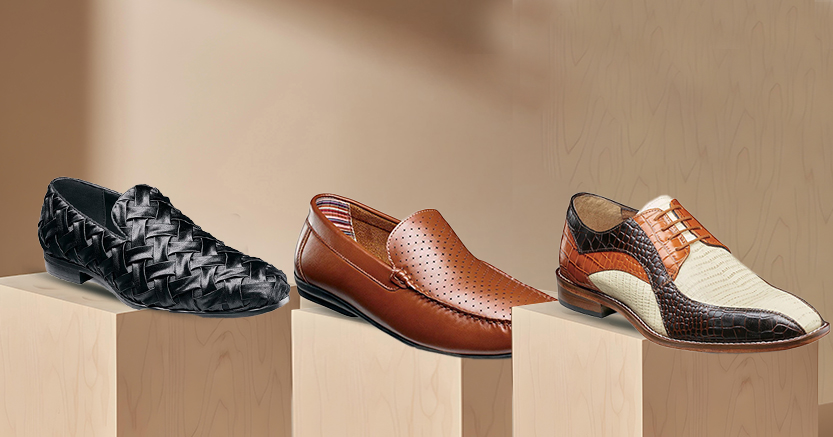Jan 01, 2025
How Mens suits are Made
Creating a men's suit is a meticulous process that involves several steps, from design and fabric selection to cutting, sewing, and finishing touches. In this detailed exploration, I will explain how standard store bought men's suits are made, highlighting the craftsmanship, artistry, and attention to detail that go into creating these timeless garments.
Introduction
Mens suits symbolize sophistication and style, embodying a perfect blend of tradition and modernity. Making a men's suit is an intricate and time-consuming craft that requires skilled artisans and precision at every stage.
Design and Inspiration
The journey begins with the design phase, where skilled designers conceptualize the look and feel of the suit. Inspiration can be drawn from various sources, including historical fashion, current trends, and the client's specific requirements. It would not be an exaggeration to say that suit style changes year in and year out in the most minute ways. It takes a very well-trained eye to notice what the differences are. The designer starts sketching the suit, considering details such as lapel style, pocket placement, and overall silhouette. It is here where the details change every year.
Fabric Selection
The choice of fabric is crucial in determining the quality and appearance of the suit. Fabrics range from classic wool to luxurious silk and linen blends.
In collaboration with the fabric experts, the designer selects materials that complement the design and meet the client's preferences. Factors like season, climate, and the intended use of the suit also influence fabric selection. Since you are already learning, read our other blog: How to care for Mens suits here.
Pattern Making
The next step is to create a pattern once the design and fabric are finalized. A pattern is a template that serves as a blueprint for cutting fabric pieces. Skilled pattern makers use the designer's specifications to draft precise patterns for each suit component, ensuring a perfect fit and symmetry.
Cutting
With the patterns in hand, the cutting phase begins. Master cutters carefully lay out the fabric and cut each piece according to the established patterns. Precision is critical during this stage to ensure the components fit together seamlessly. The number of pieces varies depending on the suit's style and complexity.
Assembly and Sewing
The cut fabric pieces are then passed on to skilled tailors for assembly. The sewing process involves joining the components using specialized sewing machines and hand stitching. Expert tailors pay close attention to details like seam alignment, stitching density, and the overall construction of the suit. This stage requires high craftsmanship and can take several hours to complete.
Fittings and Adjustments
After the initial assembly, the client undergoes a fitting session. This allows the tailor to make necessary adjustments to ensure a perfect fit. Alterations may involve tweaking the length of sleeves, adjusting the waistline, or refining the shoulder fit. The goal is to achieve a tailored look that enhances the client's physique.
Canvasing
The canvassing process is a hallmark of high-quality suits. A layer of canvas, often made from horsehair or a blend of natural fibers, is inserted between the fabric layers of the suit jacket. This canvas provides structure and shape, allowing the jacket to conform to the wearer's body over time. The canvas is hand-stitched, contributing to the suit's durability and flexibility.
Pressing and Finishing
Once the suit has been assembled and adjusted, it undergoes a pressing and finishing stage. Steam and heat eliminate wrinkles and set the suit's shape. This step requires a skilled presser who understands the characteristics of different fabrics. Finishing touches, such as button attachment and pocket detailing, are meticulously executed during this phase.
Quality Control
Before the suit is deemed ready for delivery, it undergoes a rigorous quality control process. Inspectors examine every inch of the garment, checking for flaws, loose threads, and overall craftsmanship. This meticulous attention to detail ensures that the final product meets the highest quality standards.
Customization and Personalization
Many men's suits are made to measure or bespoke, allowing for high customization. Clients can choose details such as lapel style, button type, and pocket design. Personal touches, such as monogramming, further enhance the individuality of the suit. This level of customization adds an extra layer of complexity to the manufacturing process but results in a garment that reflects the wearer's unique style.
Sustainable Practices in Suit Making
There has been a growing emphasis on sustainability in the fashion industry in recent years
. Some suit manufacturers are incorporating eco-friendly practices, such as using recycled fabrics, reducing waste in production, and implementing ethical labor practices. This section explores how sustainability is making its mark in men's suit manufacturing.
The Future of Men's Suit-Making
As technology advances, the future of men's suit-making is likely influenced by innovations in materials, production processes, and customization options. This section explores emerging trends and technologies that may shape the landscape of men's fashion in the coming years.
Modern suit factories combine traditional craftsmanship and cutting-edge technology to streamline the production process. Here's a detailed look at how men's suits are made in contemporary manufacturing facilities:
1. Design and Digital Prototyping:
- Designers use computer-aided design (CAD) software to create detailed digital prototypes of the suits.
- These digital models help visualize the final product and can be easily customized.
2. Automated Cutting:
- Computer Numeric Control (CNC) cutting machines cut fabric pieces precisely according to the digital patterns.
- Automated cutting reduces material waste and ensures accuracy in pattern execution.
3. Assembly Line Sewing:
- Assembly lines with specialized sewing machines are used for the bulk of the stitching process.
- Skilled workers operate the machines to stitch together different suit components.
- Automation is employed for repetitive tasks, while skilled artisans handle intricate details.
4. Fusing Technology:
- Many modern suits utilize fusible interlining for added structure. This involves attaching a heat-activated adhesive layer to the fabric through a fusing machine.
- Fusing technology allows for a quicker and more efficient process than traditional hand-sewn canvassing.
5. 3D Body Scanning for Customization:
- Some factories use 3D body scanning technology to create made-to-measure or bespoke suits.
- Customers' precise body measurements are scanned, and the data is used to create patterns tailored to individual body shapes.
6. Quality Control through Technology:
- Automated quality control systems are implemented to detect defects, irregular stitching, or inconsistencies in fabric patterns.
- This ensures that each suit meets the factory's quality standards before progressing to the next stage.
7. Smart Manufacturing and IoT:
- Internet of Things (IoT) devices are integrated into the manufacturing process to monitor and optimize production flow.
- Data analytics help identify bottlenecks, improve efficiency, and reduce lead times.
8. Robotic Pressing:
- Robotic pressing machines are employed for steaming and shaping suits.
- These machines provide consistent pressure and heat, ensuring a professional finish to the garments.
9. Automated Packaging and Distribution:
- Automated packaging systems ensure that the suits are carefully folded, packed, and labeled for shipping.
- Efficient logistics and distribution systems help in delivering the finished products to retailers or directly to customers.
10. Sustainable Practices:
- Many modern factories are adopting sustainable practices, using eco-friendly materials and implementing processes to reduce environmental impact.
- Recycling initiatives and ethical labor practices contribute to a more sustainable approach to suit manufacturing.
11. Customization Software:
- Some factories offer online customization tools, allowing customers to choose specific details such as lapel style, button types, and pocket designs.
- This customization is then seamlessly integrated into the production process.
12. Employee Training and Skill Development:
- Despite automation, skilled artisans remain crucial for certain intricate tasks. Factories invest in training programs to ensure workers have the necessary skills for their roles. Much of this is operating state of the art machines that specialize in specific tasks like sewing a waistband on or cutting button holes that is done in factories these days.
In essence, modern suit factories marry the artistry of traditional craftsmanship with the efficiency of advanced technologies. The combination of skilled human labor and automation results in high-quality, customizable suits that meet the demands of contemporary fashion while maintaining a commitment to precision and craftsmanship.
Conclusion
In conclusion, creating a men's suit is a labor-intensive and highly skilled process involving carefully orchestrated steps. From the initial design phase to the final quality control check, every aspect of suit-making requires a keen eye for detail and a dedication to craftsmanship. The rich history and tradition of men's suits continue to coexist with contemporary trends, ensuring that these timeless garments remain a staple of refined style for generations to come.












